Formula 2009 year: Honda fit model: GE6 engine model: L13A mileage: 181, 500 km

Honda Fit’s car inspection and maintenance
It is a car inspection and maintenance of my car. Jacking up and checking in advance, I could hardly see where the mileage was mostly damaged, for a mileage of 180,000 kilos. Since there was no particular problem in the downside and the appearance, I thought whether I should bring in the inspection without carrying anything as it is, but I decided to replace expendable parts considering the number of mileage, and to do a car inspection indefinitely.
The contents of the car inspection service (replacement parts etc.) are as follows.
- Engine oil change 3.5 l (Honda genuine 0 w – 20)
- Exchange of oil element
- Air element exchange
- Wiper rubber exchange
- Front disk pad exchange
- Brake oil exchange 1.0 ℓ
- Brake adjustment
- HMMF (Honda · Multimatic Fluid) exchange
- Replace the plug
Cost of parts will be available if you prepare about 12,000 yen ~ 14,000 yen for the above parts. (Online mail order price)
Replacement of spark plug
As the mileage exceeds 180,000 km, replace the spark plug. This car’s plug uses 100,000 kilometers of maintenance-free iridium plug, it does not need to remove and clean every vehicle inspection like the old spark plug or adjust the gap, but the mileage 100 thousand It is recommended to change every kilometers.
Spark plug position
In the case of fitting, four plugs are mounted on the left side of the engine and are located just under the cowl, which houses the wiper arm on the back side of the engine room. So in plug replacement it is necessary to first remove the wiper arm and remove the wiper motor and warper link stored under it and its cover to create a working space.

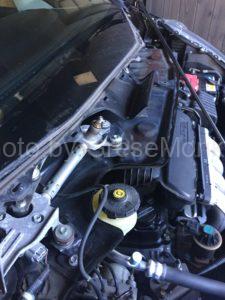
Be careful not to hurt as the windshield will be exposed. Then, a plate with a car body number stamped comes out, but I will try not to hurt this as much as possible.
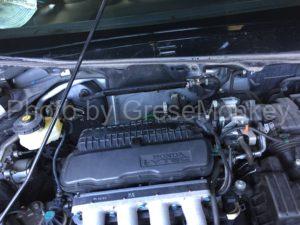
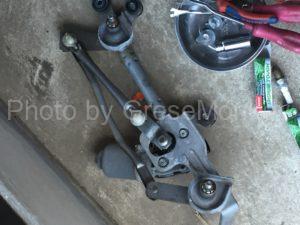
Even if you remove the wiper links, the space may be narrow, but we will work carefully.

It is an exposed ignition coil. There is an O 2 sensor in the back. You can also replace the O2 sensor from here.
Replacing spark plug
Remove the ignition coil, make full use of the ratchet wrench, extension bar and plug wrench and change the plug with a narrow working space. What you are careful with replacing plugs means that you never use air ratchets. When removing and tightening the plug, since the screw source can not be seen, the feeling of loosening by hand tightening becomes important. If possible, there is a tool called a spinner between the extension bar and the ratchet, but if you use it it will be much easier to tighten and loosen by hand. It may be a steady path, but because I can work reliably this way I like it the way I like. If you tighten the plug which is not exactly engaged with the air ratchet, the screw hole of the plug hole may be broken in the worst case. It is certain that it will become the engine OH when this happens. There is not such a ridiculous thing as to defeat the engine with just one screw hole. So be sure to install yourself by hand and tighten with a ratchet handle. I think that it is better to use a torque wrench if there is a suitable one. (For tightening torque value, please contact the maker etc.) In case you are wearing it with the size of the screw hole of the plug and the proper tightening torque feeling with the sense of the hand, do not use it There are many.
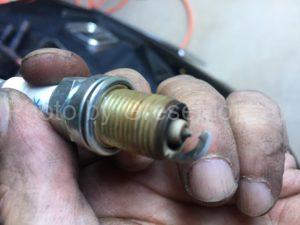
The burning condition of the plug is good. You can judge it as evidence that combustion is going well.
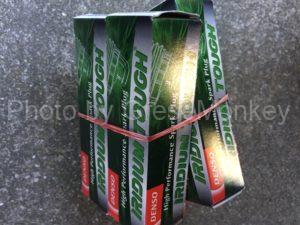
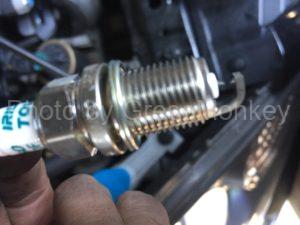
It is a new iridium plug. There are about 1 500 yen from about one. When purchasing by yourself, pay attention to conformity with the car.
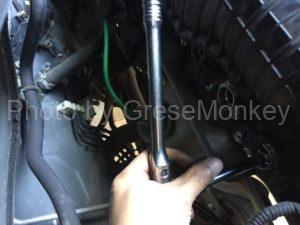
Be sure to use the hand tool when installing the plug.

Tool used in plug replacement
- Plug wrench: B25P – 16H (KTC)
- Extension bar: BE 20 – 150 (KTC) Use lengths as needed
- Ratchet spinner: FRS 70 A (Snapon) necessities
- Ratchet handle: F747A (Snapon) Old style
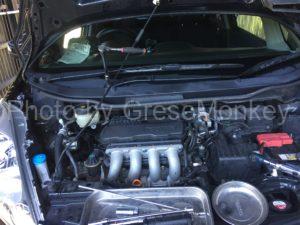
Securely tighten all four plugs, attach the ignition coil and coupler, and then return the wiper link and cover to the original. I will work while carefully paying attention to forgetting to tighten the plug and forgetting to install each coupler.
The engine starts smoothly and rushing up, trial running, checking whether acceleration, deceleration, etc. are smooth or not and it is finished unless there is no problem.
Replacement parts at the mileage of 100,000 km
In general, the timing of replacing periodic replacement parts such as timing belts and spark plugs will be changed according to the recommended distance and timing, but in reality it is important to know how to use the car, I decide taking into account the distance number. For example, if the mileage at the time of vehicle inspection and goods receipt is 80,000 kilos, and the mileage at the time of goods receipt of the previous vehicle inspection is about 40,000 kilos, the number of mileage for the year is about 20,000 kilometers (continued vehicle inspection is two years) Become. In addition to this, we grasp the user’s usage of the car (commuting it, driving a long distance, leaving it in the garage, etc.) and check the condition of the car. By doing so, you should know which parts are exhausted at that point and that the car needs replacement.
In other words, if the current mileage (80,000 km), the number of mileage (about 20,000 kilometers) per year and the user’s usage situation (very general), the mileage is 100,000 kilometers If it is a mini car or a regular car it will be possible to judge that it is around time to play somewhere. (To the last story) Parts that are recommended to replace 100,000 kilometers with replacement parts at the time are fan belts, LLC (super coolant), timing belts, water pumps, spark plugs etc for engines. Likewise, if there is a record of the remaining amount at the time of vehicle inspection, you can predict the approximate remaining amount of the disc pad after 2 years from the time of vehicle inspection. If you actually inspect it with this way of thinking and decide the replacement part, it will be easier to explain to the user, and you will understand that you will be able to exchange it after being convinced.
This plug replacement is not a short-circuited way of thinking about replacing the plug for the second time because the mileage is nearly 200,000 kilometers and the plug is generally said to be 100,000 kilometers to replace, so the annual mileage is roughly 2 Because it is around 10,000 kilometers so that the next time we do it at the time of vehicle inspection it will be over 200,000 kilometers so you can understand why the user explained how to exchange this time. That is to say.